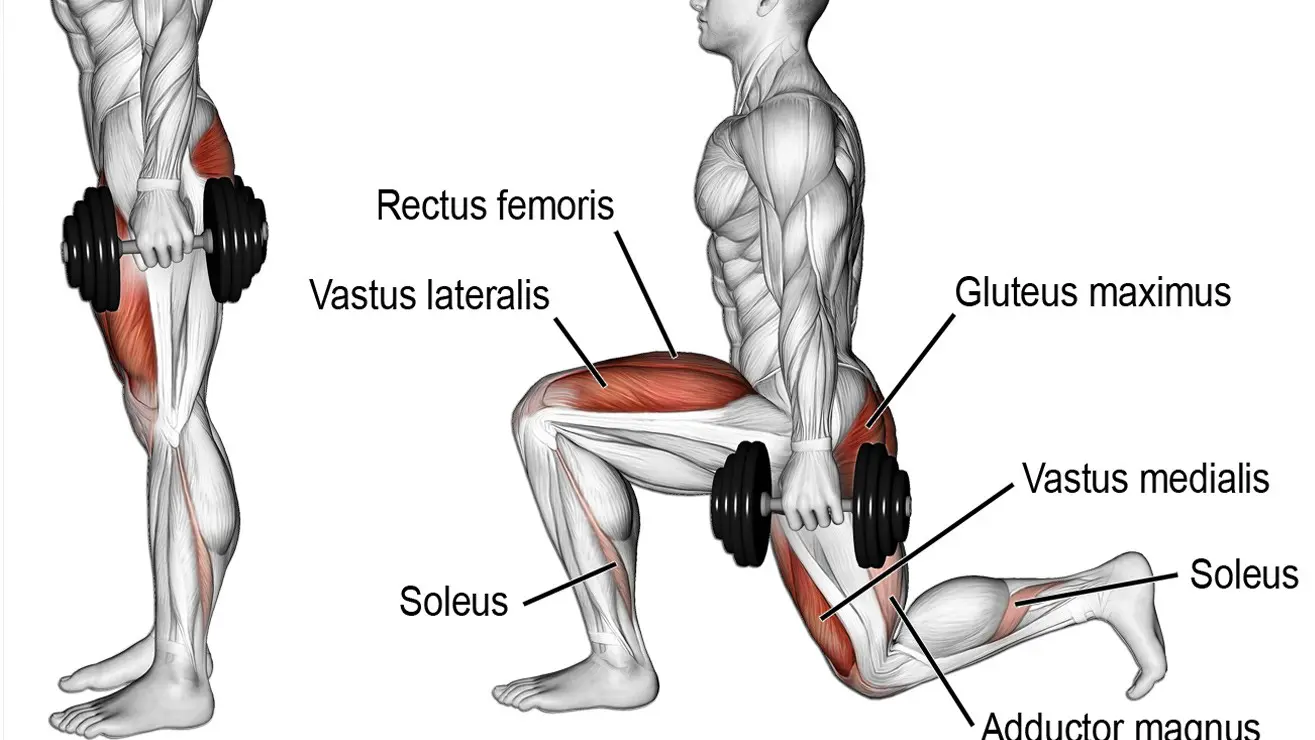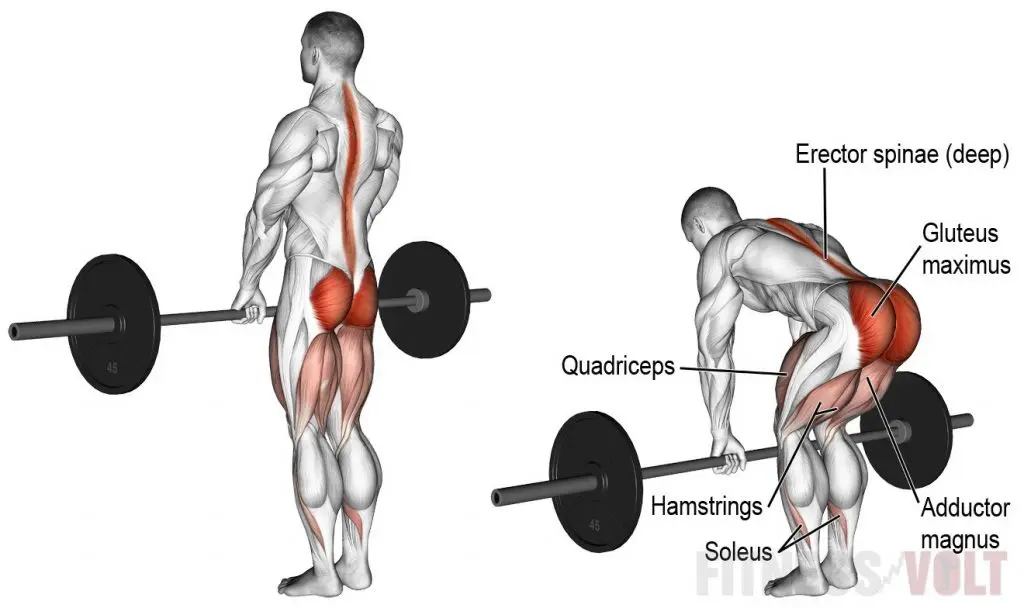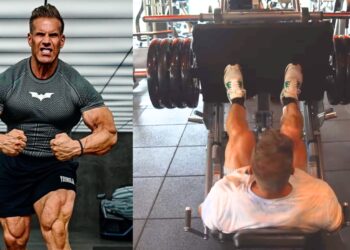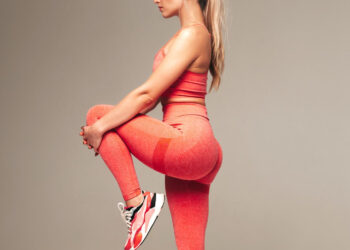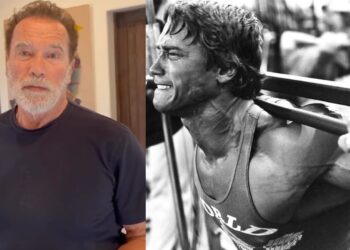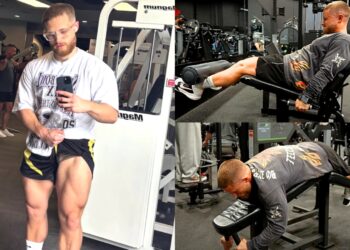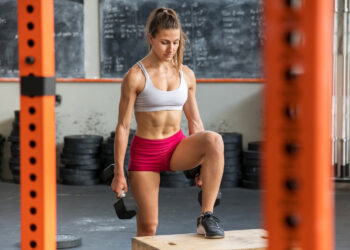If you really want to build the biggest, strongest, leanest body you can, you need to get serious about leg training. Your lower body makes up close to 50% of your muscle mass, but a lot of people don’t really apply themselves to leg training. That leaves a lot of untapped potential for muscle growth.
Why the lack of love for leg training? It’s probably because working the quadriceps, hamstrings, glutes, and calves is HARD! Even the most basic leg workouts can be exhausting and can leave you sore and limping for days afterward.
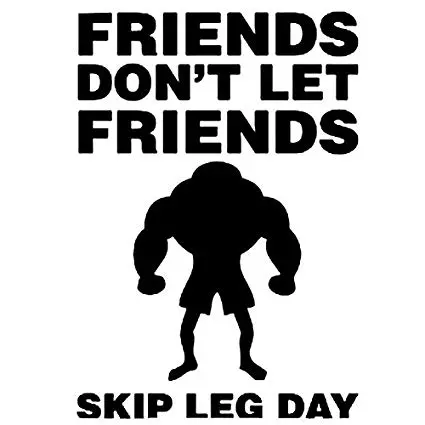
Unfortunately, and unless you are happy with an average physique, you can’t afford not to train your legs hard and often. There is nothing worse than seeing an otherwise well-developed person walking around on skinny, weak legs. Like the meme says, “Friends don’t let friends skip leg day!”
Lower body anatomy 101
Effective leg training needs a variety of exercises. That’s because your legs are made up of a lot of different muscles with a range of functions. Your main lower-body muscles are:
- Quadriceps– quads for short, these muscles are located on the front of your thigh. Their primary function is extension of the knee.
- Hamstrings– located on the rear of your thigh, these muscles are responsible for knee flexion and hip extension.
- Gluteus maximus– glutes for short, and also known as your butt, this is the largest muscle in the human body. Its main function is hip extension.
- Adductors – located on the inside of your thighs, these muscles are responsible for drawing your leg in toward the midline of your body. There are three adductors: Longus, Brevis, and Magnus.
- Abductors – the muscles of the outer hip responsible for lifting your leg out and away from the midline of your body. The main abductors are gluteus minimus and medius, and tensor fasciae latae , or TFL for short.
- Gastrocnemius – the larger, upper calf muscle responsible for pointing your foot, a movement correctly called plantarflexion. Gastrocnemius is also a secondary knee flexor.
- Soleus – the smaller, lower calf muscle. Also involved in plantarflexion and most active when the knee is bent.
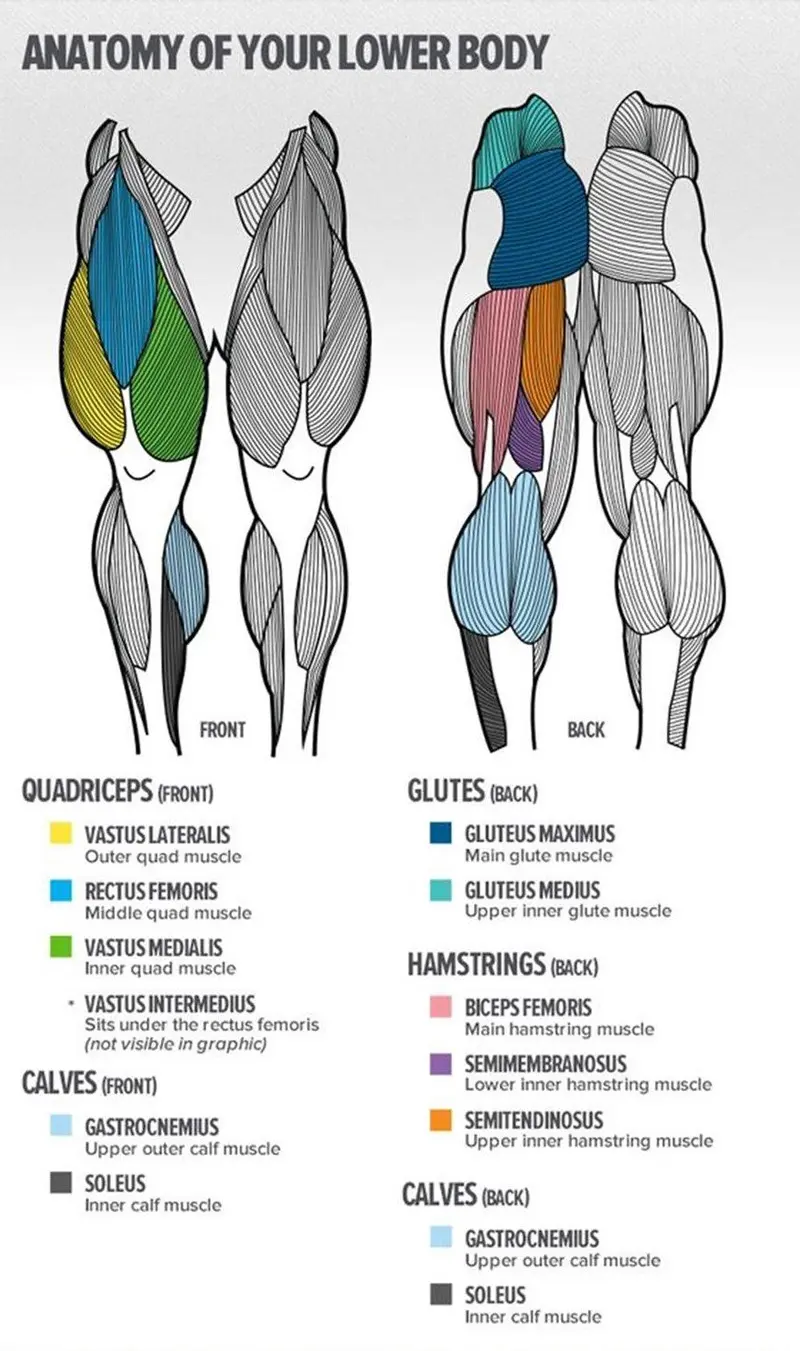
How to build bigger, stronger muscles
You can’t just go through the motions in the gym and expect your muscles to grow. Instead, you need to adhere to the principles of effective exercise to get the results you want. That means you need to train long enough and hard enough to trigger hypertrophy. According to studies, for muscles to grow, you need to consider the following factors in your training (1 & 2):
- Focus on compound exercises– compound exercises involve movement at multiple joints at the same time. They also allow you to lift heavyweights. Examples of compound lower body exercises include leg presses, lunges, and step-ups.In contrast, isolation exercises like leg extensions and hip abductions only involve movement at one joint. They are not bad exercises, but your training should include plenty of compound exercises if you want to build maximal muscle and strength.
- Train hard – easy workouts don’t build muscle. If you want your muscles to grow, you need to challenge them. Lift heavy weights and take most of your sets close to failure. Failure is when you cannot perform any more reps in good form. This creates muscle tension and microtrauma, both of which are required for muscle growth.
- Make your workouts progressive– make sure you increase your weights week by week, otherwise your progress will soon stall. If you can’t add more weight, try and squeeze out an extra rep or two, or shorten your rests between sets.
- Don’t forget sleep and nutrition – training hard takes a lot out of your body. Make sure you replenish your energy levels by getting enough sleep and eating properly. If you aren’t making progress, you may need to pay more attention to sleep and nutrition.
- Be consistent– if you miss more workouts than you complete, you’ll never get the results you want. Commit to training regularly and consistently. If you skip too many workouts, your progress will soon stall, and you may even start to lose muscle and strength.
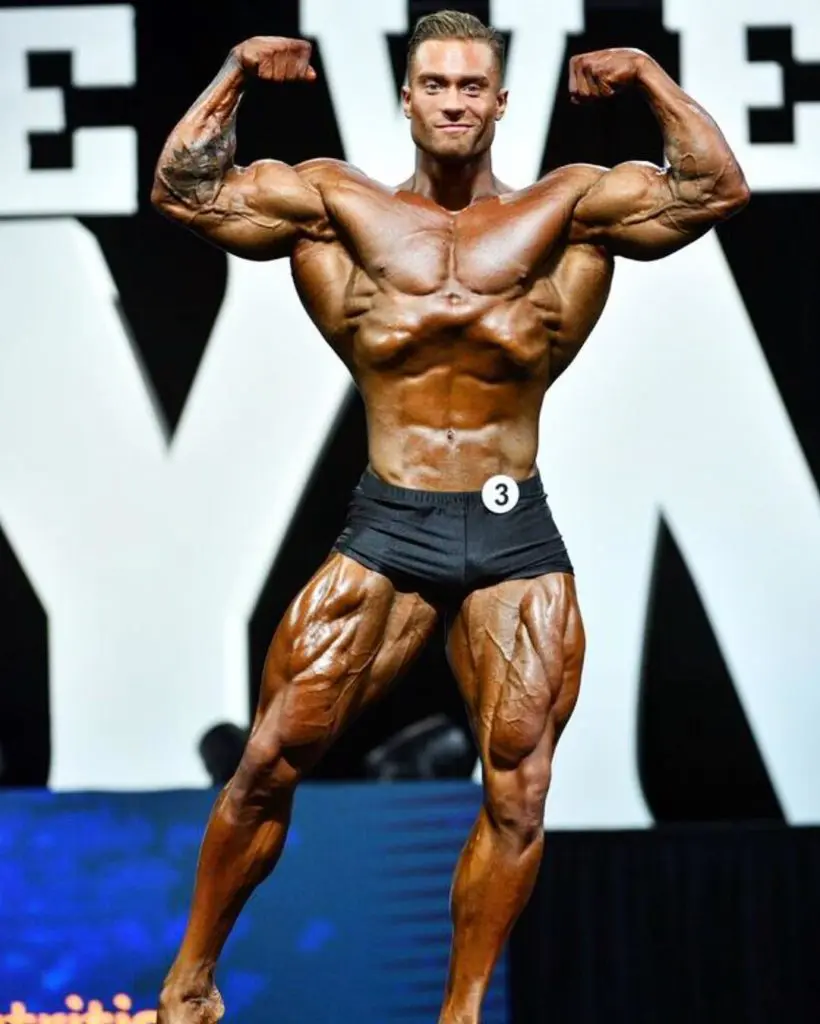
Your big, brutal leg workout
If your current leg workout is not producing the results you want, or you’ve not been working your legs hard enough lately, it’s time to try something new! Do this workout once or twice a week, on non-consecutive days. Warm-up before each workout with some light cardio, dynamic stretches, and a couple of light sets of each exercise. End your session with a few more minutes of cardio, followed by static stretching and foam rolling for your major lower body muscles.
Level Up Your Fitness: Join our 💪 strong community in Fitness Volt Newsletter. Get daily inspiration, expert-backed workouts, nutrition tips, the latest in strength sports, and the support you need to reach your goals. Subscribe for free!
| Exercise | Sets | Reps | Recovery | |
| 1 | Paused squats | 4 | 5 | 3 minutes |
| 2a | Leg extensions 21s | 3 | 21 | 90 seconds |
| 2b | Alternating backward lunges | 8 per leg | ||
| 3a | Romanian deadlifts | 3 | 10 | 90 seconds |
| 3b | Leg curls 21s | 21 | ||
| 4 | Super slow standing calf raises | 3 | 15 | 60 seconds |
| 5 | Seated calf raises | 2 | 15 | 60 seconds |
Note: Perform exercises 2a and 2b, and 3a and 3b as supersets. That means you must do them back to back, and without any rest. To clarify, do one set of leg extensions and then immediately do a set of backward lunges. Rest for 90 seconds, and then repeat that pairing. Use the same method for Romanian deadlifts and leg curls.
Paused squats
Regular back squats are one of the best quadriceps, hamstrings, and glute exercises around. Adding a mid-rep pause makes them even more effective because it increases time under tension, which is how long your muscles work per set.
- In a squat rack, rest and hold a barbell across the fleshy part of your upper back. Stand with your feet shoulder-width apart, toes turned slightly outward.
- Lift your chest, inhale, and brace your abs. Look straight ahead.
- Push your hips back and bend your knees. Descend until your thighs are roughly parallel to the floor. Hold this position for five seconds.
- Stand up and then squat down again. This time pause for four seconds.
- Reduce the length of each pause so that, for your last rep, you only pause for one second.
- That’s one set; rest and get ready to do it all over again, starting with a five-second pause.
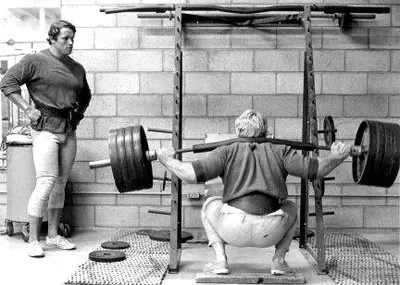
Leg extensions 21s
21s are commonly associated with biceps training, but they are just as effective when combined with leg extensions. Prepare for your quads to burn like crazy!
Level Up Your Fitness: Join our 💪 strong community in Fitness Volt Newsletter. Get daily inspiration, expert-backed workouts, nutrition tips, the latest in strength sports, and the support you need to reach your goals. Subscribe for free!
- Set up your leg extension so that your knees are aligned with the machine’s pivot point. The leg pad should rest against your lower shin.
- Extend your legs, so your knees are about halfway straight. Lower the weights and repeat seven times.
- Next, fully extend your knees and then lower the weight halfway down. Repeat seven times.
- Finally, do seven full reps. Keep your movements slow and controlled. On completion, move immediately to the next exercise.
Alternating backward lunges
Backward lunges work your quads, hamstrings, and glutes. Although, after the leg extension 21s you’ve just done, you’ll feel this exercise mostly in the front of your thighs.
- Stand with your feet together and your hands by your sides.
- Take a large step backward and bend your legs. Lower your rear knee to within an inch of the floor.
- Step back in and return to the starting position. Do another rep but, this time, lead with the opposite leg.
- Continue alternating legs for the duration of your set.
- Make this exercise harder by holding dumbbells.
Romanian deadlifts
Romanian deadlifts are a classic hamstring, glute, and lower back k exercise. They take your hammies through a long range of motion, focusing primarily on hip extension. This makes them the ideal companion exercise to leg curls, which are all about knee flexion.
- Hold a barbell in front of your thighs and stand with your feet about hip-width apart. Bend your knees slightly, but then keep them rigid.
- Push your hips back and lean forward. Lower the bar as far down your legs as you can without rounding your lower back. Get a really good stretch in your hamstrings.
- Stand back up and repeat. On completion, move immediately to the next exercise.
- Use dumbbells instead of a barbell if preferred.
Leg curls 21s
Use the same 21s method to hammer your hamstrings into shape.
- Use a seated or lying leg curl machine as preferred. Starting with your legs straight, bend your legs about halfway. Extend your legs and repeat seven times.
- Next, fully flex your legs and then extend them about halfway. Repeat seven times.
- Finally, do seven full reps.
Super slow standing calf raises
Calves are notoriously hard to build. They have a high threshold for weight and pain! This calf-building variation eliminates all momentum and increases time under tension for the ultimate lower leg workout.
- Place the balls of your feet on the calf raise machine’s step. Put your shoulders beneath the shoulder pads. Stand up with your legs straight, and core braced.
- Taking five seconds, slowly lower your heels down as far as you can.
- Next, using the same slow tempo, push up onto your tiptoes.
- Ignore the burning in your calves and keep going!
Seated calf raises
Done with bent knees, this exercise emphasizes the soleus or lower calf muscle. When fully developed, the soleus can add a lot to your lower leg size and strength.
- Sit on the seated calf raise machine so that the leg pad is across your lower thighs. Place the balls of your feet on the edge of the machine’s step.
- Lower your heels down as far as you can, and then push up high onto your tiptoes.
- This is your last exercise, so give it 100%.
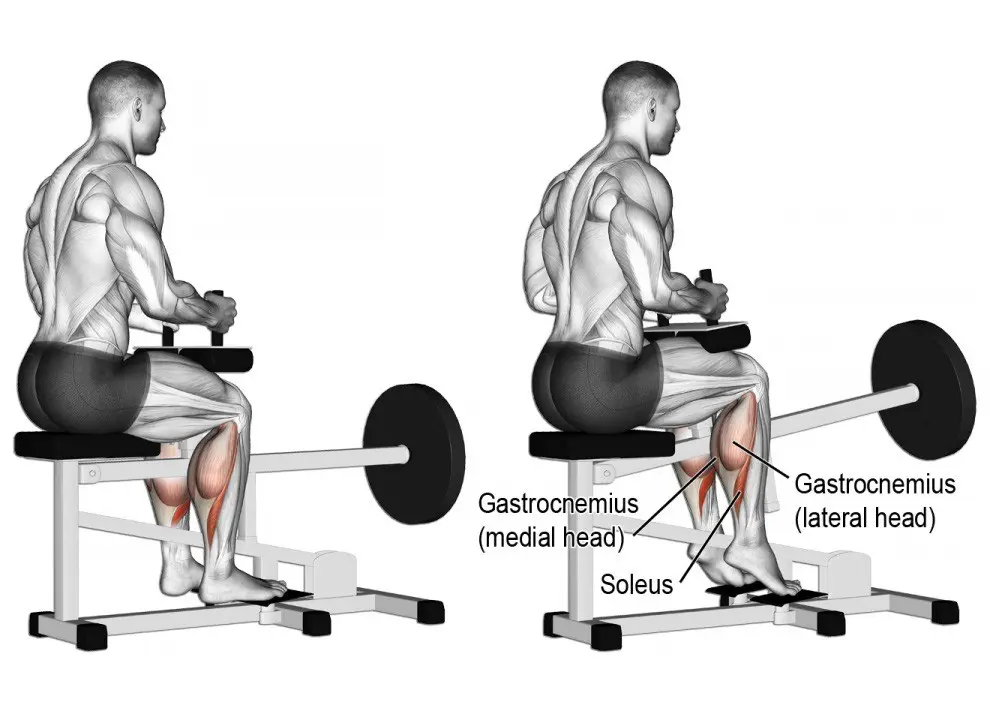
Leg training wrap-up
Building a strong, muscular lower body takes time and effort, but the rewards are enormous. Not only will your bigger, stronger “wheels” look amazing, but the rest of your body will also grow faster too. Don’t hide your legs under long pant legs; train them hard and build a lower body you are proud to show off.
References:
1- Goldberg, A. L.; Etlinger, J. D.; Goldspink, D. F.; Jablecki, C. (1975). “Mechanism of work-induced hypertrophy of skeletal muscle”. Medicine and Science in Sports. 7 (3): 185–198. ISSN 0025-7990. PMID 128681. https://www.ncbi.nlm.nih.gov/pubmed/128681
2- Peterson, Mark D.; Rhea, Matthew R.; Alvar, Brent A. (2005-11). “Applications of the dose-response for muscular strength development: a review of meta-analytic efficacy and reliability for designing training prescription”. Journal of Strength and Conditioning Research. 19 (4): 950–958. doi:10.1519/R-16874.1. ISSN 1064-8011. PMID 16287373. https://www.ncbi.nlm.nih.gov/pubmed/16287373

